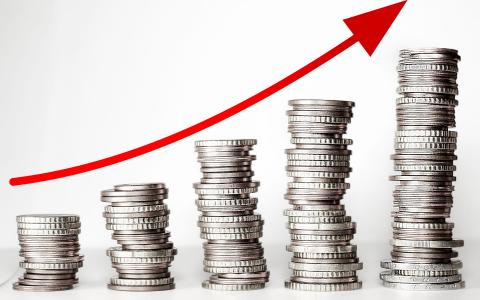
(USA Today) - Americans are still contending with higher food, gas and rent costs.
While inflation eased a little bit in August, it remains elevated. The latest Consumer Price Index revealed that inflation rose 8.3% last month compared with the same time last year.
At its last meeting in July, the Fed raised interest rates by 0.75 percentage points to bump the federal funds target range to 2.25% to 2.5% in an effort to rein in inflation. It also raised rates by 0.75 percentage points in June, representing at that time the largest increase at a single meeting since 1994. A similar-size hike is expected when the Fed meets again this week in light of the disappointing August CPI report and strong job growth that's pushing up wage increases.
But why are hikes used to combat inflation, and how do they work?
When will the Fed announce the next rate hike?
The Fed is expected to announce another hike by the end of its Federal Open Market Committee's meeting on Tuesday, Sept. 20 and Wednesday Sept. 21. The FOMC is the body within the Fed that decides monetary policy, including interest rates. More committee meetings are scheduled for November and December.
How does a Fed hike work? How does it affect prime rate, 10-year Treasury bond?
As the country’s central bank, the Federal Reserve is in charge of monetary policy. Its dual mandate is to promote “maximum employment and stable prices in the U.S. economy.” Stable prices mean keeping inflation in check, with a long-term mean annual target of 2%.
In 2020, CPI inflation was 1.4%. In 2021, it was 7%.
One of the Fed's main tools to impact inflation is the federal funds rate, which is the rate banks charge each other for overnight loans.
Although the Fed doesn't directly control all interest rates, when it raises the federal funds rate, most other interest rates eventually follow suit, including adjustable-rate mortgages, credit cards, home equity lines of credit, and other loans. Some of these are tied to the prime rate, which is based on the federal funds rate, according to Bankrate.com.
A rising federal fund rate also affects the 10-year Treasury bond, which impacts mortgages.
Borrowing money then becomes more expensive for consumers, who in turn spend less. Demand begins to wane and inflation, in theory, starts to relent.
Meanwhile, some Americans, particularly seniors, see their coffers buoyed by higher bank savings rates.
How many times has the Fed raised interest rates in 2022?
The Fed has raised interest rates four times this year. The pandemic’s shutdown of the economy had kept rates near zero before the Fed increased rates by a 0.25 percentage point in March, the first hike in more than three years.
An additional increase of 0.50 percentage point came in May, followed by a historic 0.75 percentage point bump in June, and then another 0.75 jump in July, putting the rate at its current range of 2.25% to 2.5%.
How much will the Fed raise rates?
Economists surveyed by Bloomberg predict a third consecutive 0.75 percentage point hike this week. That would bring that rate range to 3% to 3.25%. The same economists surveyed predicted the upper end of the range would reach 4% by the end of the year.
Are interest rate hikes good for stocks?
Interest rate hikes create volatility in the stock market. The value of future earnings tends to dip when higher interest rates are expected, according to U.S. Bank, making investors less eager to bid up stock prices.
Higher interest rates are meant to slow the economy, which can stunt revenues for companies, potentially damaging their growth and stock prices, according to Forbes.
This article originally appeared on USA TODAY: How can Fed rate hikes reduce inflation? Fed increases explained.
By Orlando Mayorquin, USA TODAY
Contributing: Paul Davidson, Medora Lee



